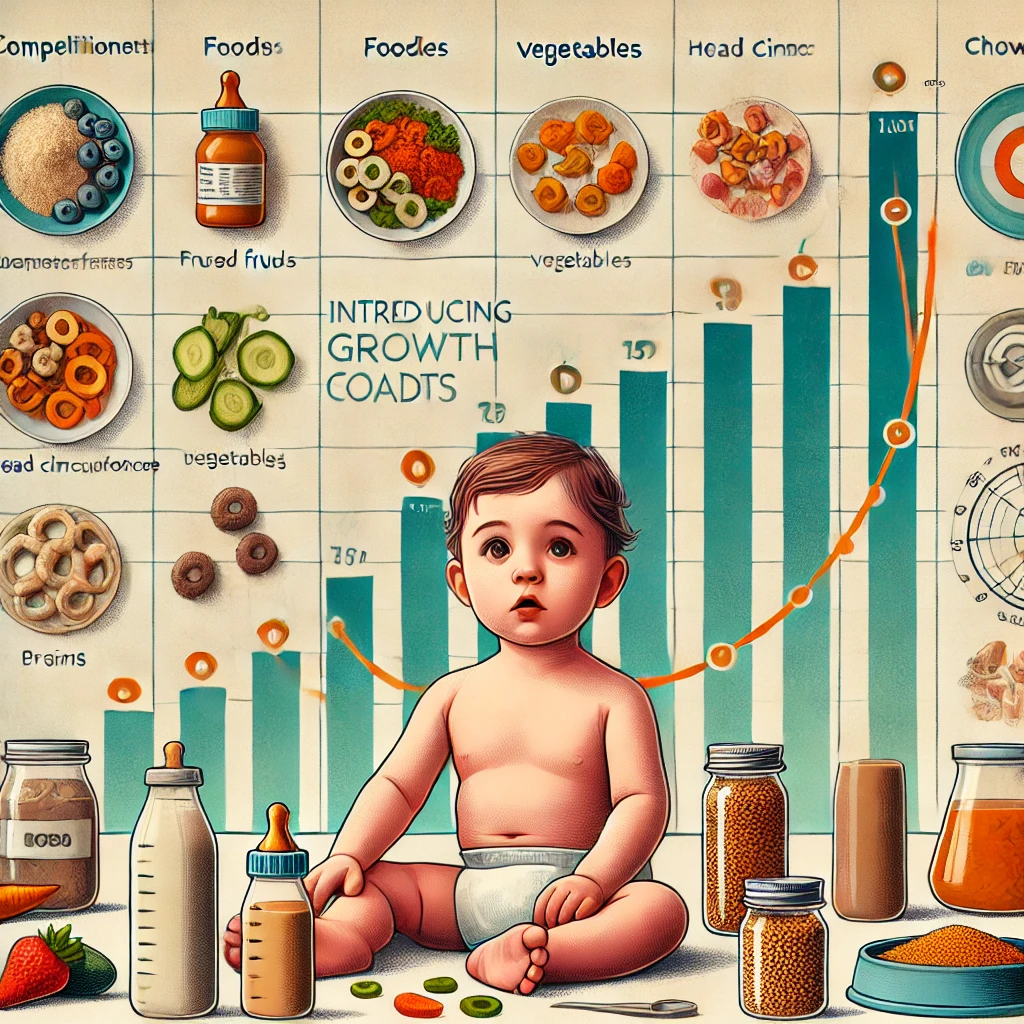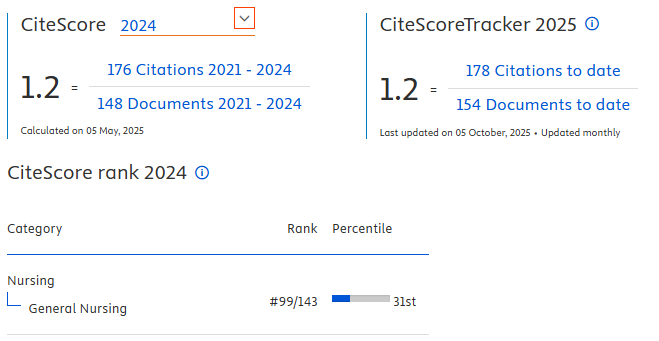Factors contributing to the provision of complementary food by fathers to improve the growth of children aged 6-24 months: a cross sectional study

Downloads
Introduction: Providing complementary foods to children aged 6-24 months has many obstacles that have an impact on the child's growth. So far, the mother has played the most role, fathers tend to pay less attention in giving complementary food. The purpose of this study was to analyze the factors that contribute to the provision of complementary foods by fathers to improve the growth of children aged 6-24 months.
Methods: A cross-sectional approach on 366 children aged 6-24 months who were recruited using simple random sampling. The variables consisted of children age, gender, father's age, father's education, father's job, mother's age, mother's education, mother's job dan father's role and the growth of children age 6-24 months. Data was analysis binary logistic regression.
Results: The study showed positive father involvement (72%) and normal growth (76.5%). The multivariate analysis show that father's education, father's job, mother's age, mother's education, mother's job and father's role have a significant relationship with the growth chart. Father's role is the most dominant variable because its OR is the highest (p = 0.001; OR = 2.128; CI = 1.263-3.433), which means that a supportive or better father's role will make the provision of complementary food better and improve the child's growth chart.
Conclusions: Fathers play an important role to give complementary feeding in children aged 6-24 months. This study is expected to be applied with a wider range of areas in order to obtain comparisons with research that has been done.
Ajike, S. O. et al. (2020) ‘Effect of a breastfeeding educational programme on fathers’ intention to support exclusive breastfeeding: A quasi-experimental study’, African Journal of Reproductive Health, 24(3), pp. 59–68.
Al-Jawaldeh, A., Taktouk, M. and Nasreddine, L. (2020) ‘Food consumption patterns and nutrient intakes of children and adolescents in the Eastern Mediterranean Region: A call for policy action’, Nutrients, 12(11), p. 3345.
Allotey, D., Flax, V. L., Ipadeola, A. F., et al. (2022) ‘Fathers’ complementary feeding support strengthens the association between mothers’ decision-making autonomy and optimal complementary feeding in Nigeria’, Current Developments in Nutrition, 6(7), p. nzac098.
Allotey, D., Flax, V. L., Ipadeola, A., et al. (2022) ‘Maternal and paternal involvement in complementary feeding in Kaduna State, Nigeria: The continuum of gender roles in urban and rural settings’, Maternal & Child Nutrition, 18(2), p. e13325.
Aquilino, W. S. (2006) ‘The noncustodial father–child relationship from adolescence into young adulthood’, Journal of Marriage and Family, 68(4), pp. 929–946.
Banerjee, A. et al. (2021) ‘The challenges of universal health insurance in developing countries: experimental evidence from Indonesia’s National Health Insurance’, American Economic Review, 111(9), pp. 3035–3063.
Basri, H. and Hadju, V. (2020) ‘Breastfeeding and complementary food on nutritional status infants in Indonesia’, Enfermería Clínica, 30, pp. 191–195.
Bimpong, K. A. et al. (2020) ‘Mothers’ knowledge and attitudes regarding child feeding recommendations, complementary feeding practices and determinants of adequate diet’, BMC nutrition, 6, pp. 1–8.
Bogale, S. K., Cherie, N. and Bogale, E. K. (2022) ‘Fathers involvement in child feeding and its associated factors among fathers having children aged 6 to 24 months in Antsokia Gemza Woreda, Ethiopia: Cross-sectional study’, Plos one, 17(11), p. e0276565.
Boswell, N. (2021) ‘Complementary feeding methods—A review of the benefits and risks’, International Journal of Environmental Research and Public Health, 18(13), p. 7165.
Bukit, D. S., Keloko, A. B. and Ashar, T. (2021) ‘Father’s support and mother’s behavior in stunting prevention efforts’, Journal of Health Science and Prevention, 5(2), pp. 100–105.
Cabrera, N. J. et al. (2008) ‘Low-income, nonresident father involvement with their toddlers: variation by fathers’ race and ethnicity.’, Journal of Family Psychology, 22(4), p. 643.
Cabrera, N. J. and Tamis-LeMonda, C. S. (2013) Handbook of father involvement: Multidisciplinary perspectives. Routledge.
Clegg, M. E. et al. (2021) ‘A comparative assessment of the nutritional composition of dairy and plant-based dairy alternatives available for sale in the UK and the implications for consumers’ dietary intakes’, Food Research International, 148, p. 110586.
Cook, E. J. et al. (2021) ‘Parents’ experiences of complementary feeding among a United Kingdom culturally diverse and deprived community’, Maternal & Child Nutrition, 17(2), p. e13108.
Edelblute, H. B. and Altman, C. E. (2021) ‘The Interaction and Impact of Social Support and Father Absence on Breastfeeding’, Breastfeeding Medicine, 16(8), pp. 629–634.
Ekelund, L. et al. (2021) ‘Duration of breastfeeding, age at introduction of complementary foods and allergy-related diseases: a prospective cohort study’, International breastfeeding journal, 16, pp. 1–14.
Eshete, M. et al. (2021) ‘Aflatoxin contamination of human breast milk and complementary foods in southern Ethiopia’, Maternal & Child Nutrition, 17(1), p. e13081.
Fadilah, A. L., Muniroh, L. and Atmaka, D. R. (2023) ‘Family supports and maternal factors of complementary feeding self-efficacy for children aged 6-24 months’, AcTion: Aceh Nutrition Journal, 8(2), pp. 176–185.
Fernandes, C. et al. (2023) ‘Complementary feeding methods: associations with feeding and emotional responsiveness’, Children, 10(3), p. 464.
Hadi, A. J. et al. (2020) ‘Relationship Factor Enabling Giving Complementary Foods for Breast Milk with Baby Nutrition Status in Makassar City.’, Indian Journal of Public Health Research & Development, 11(6).
Hendriyani, H. et al. (2020) ‘Complementary feeding self-efficacy: a concept analysis’, Open Access Macedonian Journal of Medical Sciences, 8(F), pp. 11–22.
Herman, H., Mansur, A. R. and Chang, Y.-J. (2023) ‘Factors associated with appropriate complementary feeding: A scoping review’, Journal of pediatric nursing, 71, pp. e75–e89.
Hook, J. L. and Wolfe, C. M. (2012) ‘New fathers? Residential fathers’ time with children in four countries’, Journal of family issues, 33(4), pp. 415–450.
Isaacs, A., Neve, K. and Hawkes, C. (2022) ‘Why do parents use packaged infant foods when starting complementary feeding? Findings from phase one of a longitudinal qualitative study’, BMC Public Health, 22(1), p. 2328.
Januarti, L. F. and Hidayathillah, A. P. (2020) ‘Parenting culture on the role of father in prevention of stunting in toddler’, Babali Nursing Research, 1(2), pp. 81–90.
Kaur, A. et al. (no date) ‘Comparative study of breastfeeding support and guidance to mother alone, mother and father, mother father and family’.
Kosasih, D. M. et al. (2022) ‘Determinant factors behind changes in health-seeking behaviour before and after implementation of universal health coverage in Indonesia’, BMC Public Health, 22(1), p. 952.
Kostecka, M., Jackowska, I. and Kostecka, J. (2020) ‘Factors affecting complementary feeding of infants. A pilot study conducted after the introduction of new infant feeding guidelines in Poland’, Nutrients, 13(1), p. 61.
Lutter, C. K., Grummer-Strawn, L. and Rogers, L. (2021) ‘Complementary feeding of infants and young children 6 to 23 months of age’, Nutrition Reviews, 79(8), pp. 825–846.
Martin, S. L. et al. (2021) ‘Engaging fathers to improve complementary feeding is acceptable and feasible in the Lake Zone, Tanzania’, Maternal & Child Nutrition, 17, p. e13144.
Masuke, R. et al. (2021) ‘Effect of inappropriate complementary feeding practices on the nutritional status of children aged 6-24 months in urban Moshi, Northern Tanzania: Cohort study’, PloS one, 16(5), p. e0250562.
McGill, B. S. (2014) ‘Navigating new norms of involved fatherhood: Employment, fathering attitudes, and father involvement’, Journal of Family Issues, 35(8), pp. 1089–1106.
McMunn, A. et al. (2017) ‘Fathers’ involvement: Correlates and consequences for child socioemotional behavior in the United Kingdom’, Journal of Family Issues, 38(8), pp. 1109–1131.
Mkhize, M. and Sibanda, M. (2020) ‘A review of selected studies on the factors associated with the nutrition status of children under the age of five years in South Africa’, International Journal of Environmental Research and Public Health, 17(21), p. 7973.
Neri, D. et al. (2022) ‘Ultraprocessed food consumption and dietary nutrient profiles associated with obesity: A multicountry study of children and adolescents’, Obesity Reviews, 23, p. e13387.
Nguyen, T. T. et al. (2021) ‘Community support model on breastfeeding and complementary feeding practices in remote areas in Vietnam: implementation, cost, and effectiveness’, International Journal for Equity in Health, 20(1), p. 121.
Nixon, E., Greene, S. and Hogan, D. (2012) ‘“Like an uncle but more, but less than a father”—Irish children’s relationships with nonresident fathers.’, Journal of Family Psychology, 26(3), p. 381.
Phua, H. W., Razak, N. A. A. A. and Shukri, N. H. M. (2020) ‘Associations of Father’s Breastfeeding Attitude and Support With the Duration of Exclusive Breastfeeding Among First-time Mothers.’, Malaysian Journal of Medicine & Health Sciences, 16(6).
Pradanie, R., Diyan Rachmawati, P. and Cahyani, M. D. (2020) ‘Factors associated with mothers’ behaviors in selecting complementary feeding in Surabaya, Indonesia’.
Rahmah, F. (2020) ‘Fathers’ involvement in early childhood education in Indonesia’, in International Conference on Early Childhood Education and Parenting 2019 (ECEP 2019). Atlantis Press, pp. 125–130.
Régnier-Loilier, A. (2015) ‘When fathers lose touch with their children after separation’, The contemporary family in France: Partnership trajectories and domestic organization, pp. 139–157.
Rezaeizadeh, G. et al. (2024) ‘Maternal education and its influence on child growth and nutritional status during the first two years of life: a systematic review and meta-analysis’, EClinicalMedicine, 71.
Roshita, A., Schubert, E. and Whittaker, M. (2012) ‘Child‐care and feeding practices of urban middle class working and non‐working Indonesian mothers: a qualitative study of the socio‐economic and cultural environment’, Maternal & child nutrition, 8(3), pp. 299–314.
Saaka, M. et al. (2023) ‘Fathers’ level of involvement in childcare activities and its association with the diet quality of children in Northern Ghana’, Public Health Nutrition, 26(4), pp. 771–778.
Shinsugi, C. and Takimoto, H. (2024) ‘Factors associated with physical growth status among children aged 12− 59 months in the Japanese National Growth Survey on Preschool Children: A retrospective analysis’, Maternal & Child Nutrition, 20, p. e13480.
Shrestha, R. (2021) ‘Health Insurance for the poor, healthcare use and health outcomes in Indonesia’, Bulletin of Indonesian Economic Studies, 57(1), pp. 85–110.
Starkweather, K. E. et al. (2021) ‘Are fathers a good substitute for mothers? Paternal care and growth rates in Shodagor children’, Developmental Psychobiology, 63(6), p. e22148.
Susanti, G. et al. (2022) ‘Assessing the national health insurance system: a study of the implementation of health insurance policy in Indonesia’, Public Policy and Administration, 21(4).
Tello, B. et al. (2022) ‘Breastfeeding, feeding practices and stunting in indigenous Ecuadorians under 2 years of age’, International Breastfeeding Journal, 17(1), p. 19.
Ukoji, U. V. and Fayehun, O. (2023) ‘Parental Childhood Feeding Experiences and Complementary Feeding Practices in Urban Households of Nigeria’, Child Care in Practice, 29(2), pp. 152–165.
Urkia-Susin, I. et al. (2024) ‘Development and validation of the baby eating behaviour coding system (BEBECS) to assess eating behaviour during complementary feeding’, Appetite, 196, p. 107257.
Wolkanto, A. A. et al. (2023) ‘Fathers’ involvement in complementary feeding of children in Damot Woyde District, South Ethiopia: a community-based cross-sectional study’, BMC nutrition, 9(1), p. 8.
Zozaya, N., Oliva-Moreno, J. and Vallejo-Torres, L. (2022) ‘Association between maternal and paternal employment and their children’s weight status and unhealthy behaviours: does it matter who the working parent is?’, BMC Public Health, 22(1), p. 1331.
Copyright (c) 2025 Jurnal Ners

This work is licensed under a Creative Commons Attribution 4.0 International License.
Authors who publish with Jurnal Ners agree to the following terms:
- Authors transfer the Copyright and grant Jurnal Ners the right of first publication with the work simultaneously licensed under a Creative Commons Attribution 4.0 International License that allows others to remix, adapt and build upon the work with an acknowledgment of the work's authorship and of the initial publication in Jurnal Ners.
- Authors are permitted to copy and redistribute the journal's published version of the work (e.g., post it to an institutional repository or publish it in a book), with an acknowledgment of its initial publication in Jurnal Ners.
Jurnal Ners requires a formal written declaration and transfer of copyright from the author(s) for each article published. We, therefore, ask you to complete and return this form, retaining a copy for your own records. Your cooperation is essential and appreciated. Any delay will result in a delay in publication. The form can be downloaded HERE.
































